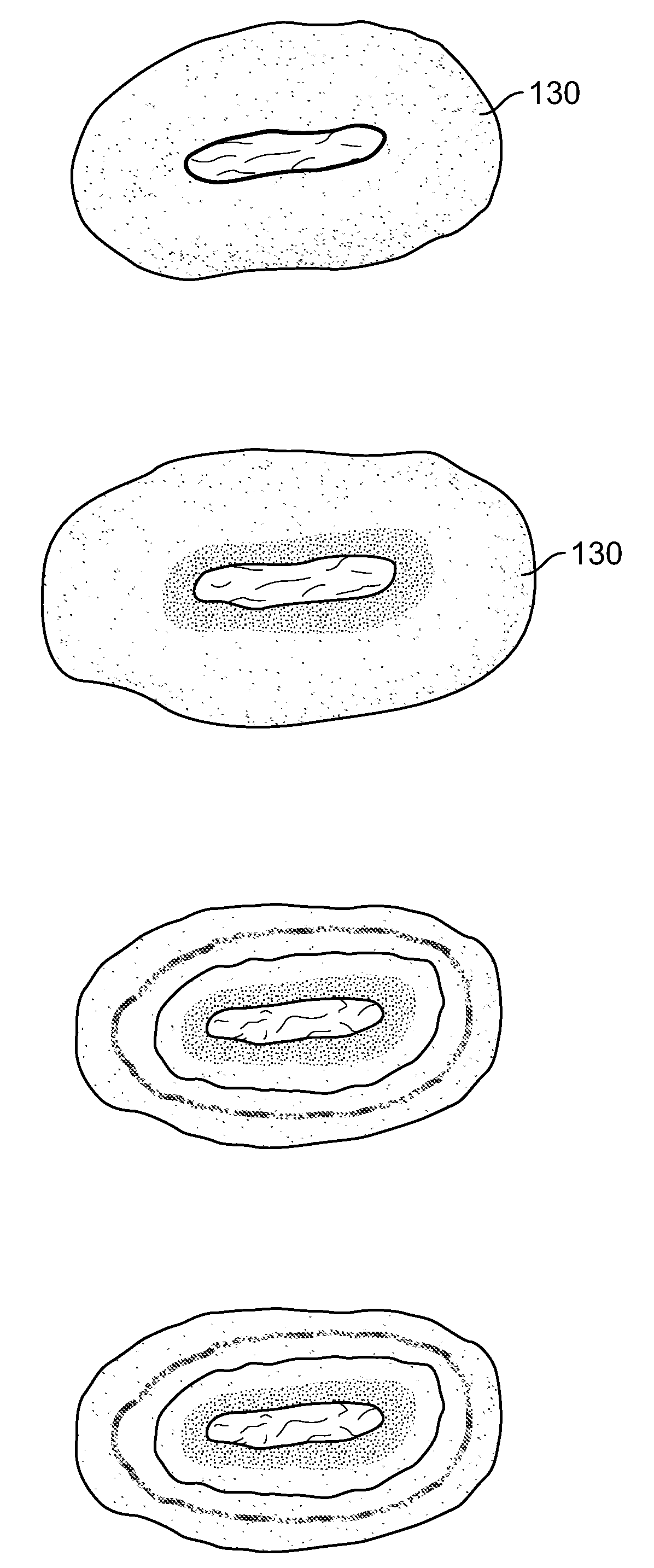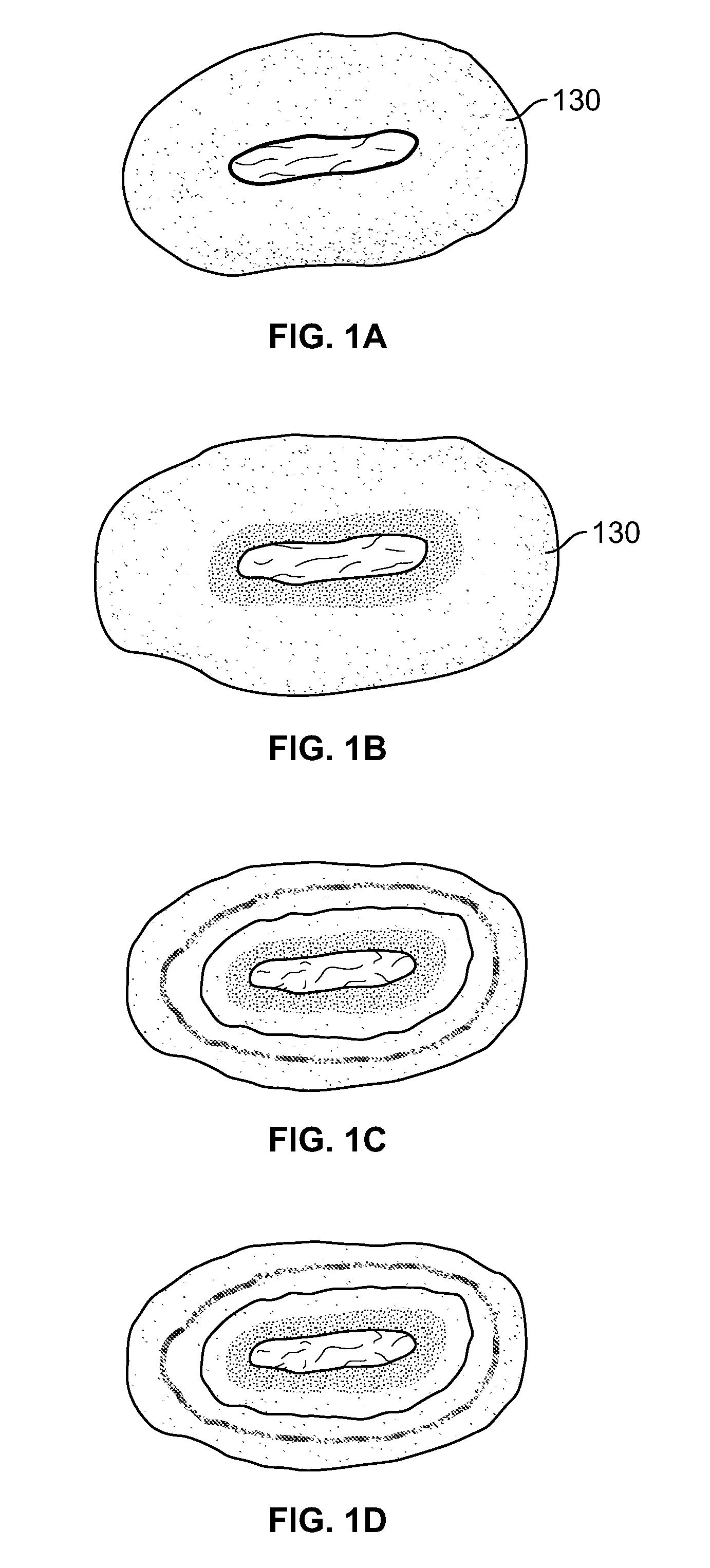Seed coating compositions and methods for applying soil surfactants to water-repellent soil
- Summary
- Abstract
- Description
- Claims
- Application Information
AI Technical Summary
Benefits of technology
Problems solved by technology
Method used
Image
Examples
example 1
[0116]The grass species evaluated included bottlebrush squirreltail (Elymus elymoides (Raf.) Swezey) and crested wheatgrass (Agropyron cristatum L. Gaertn.). Seeds were coated using a RP14MAN seed coater (BraceWorks Automation and Electric, Lloydminster, SK Canada). Seeds were coated first with a plant protectant, which consisted of 88% weight of seed to weight of product ratio (w / w) crushed limestone (size less than 200 mesh, with the bulk smaller than 300 mesh) attached to the seed with 21% w / w binder consisting of 3 parts water and 1 part polymer 100© (Germains Technology Group (Gilroy, Calif.).
[0117]To aid in the attachment of soil wetting agent, transition powder consisting of a blend containing about 5.1% w / w oil absorbent −325 RVM (Oil-Dri Corporation of America, Alpharetta, Ga.) (or, alternatively, sorbent mineral powders such as montmorillonite, attapulgite or diatomite) and 2.8% w / w powdered limestone, was attached with the above binder at 1.9% w / ...
example 2
Rate Analysis and Agglomeration Evaluation
[0120]Conglomerate evaluations were performed using crested wheatgrass (Agropyron cristatum). Single seed coatings were applied using the same methods previously explained in example 1, with seeds coated with either 96% w / w or 240% w / w wetting agent.
[0121]Agglomerations of seeds were formed after application of the plant protectant. Seeds were grouped together using 22% w / w binder consisting of 1 part water and 1 part polymer 300© (Germains Technology Group (Gilroy, Calif.). During the period adhesive was applied, powder was withheld. After application of binder 20% w / w limestone was rapidly added, thus stopping the seeds from further agglomerating together, resulting in seed batches containing pellets around 3-4 seeds. At this point methods used for applying wetting agent to a single seed were employed for application to the agglomerates.
[0122]Results indicated that seeds coated with 96% w / w wetting agent showed a 348% increase in seedling ...
example 3
Mulch Tackifiers and Agglomeration
[0123]Conglomerate evaluations were performed using crested wheatgrass (Agropyron cristatum). Agglomerations were formed using 35% w / w polymer 300© (Germains Technology Group (Gilroy, Calif.) at a ratio of 1 part polymer 300 to 1 part water. A psyllium tackifier, Ecology Controls M-Binder (S&S Seeds, Inc. Carpinteria, Calif.) was coated onto seed agglomerations in slurry form consisting of 10.8% w / w Ecology Controls M-Binder powder and 90.2% w / w water. Powdered limestone was added simultaneously with the slurry to provide a surface for the slurry to adhere to and facilitate coating of a greater amount of the tackifier. Approximately 1.83 g of lime was added per gram of slurry (62% w / w slurry, 114% w / w lime).
TABLE 3Survival of germinableTreatmentseeds (%)control27.8psyllium tackifier111.1conglomerate
PUM
 Login to View More
Login to View More Abstract
Description
Claims
Application Information
 Login to View More
Login to View More - R&D
- Intellectual Property
- Life Sciences
- Materials
- Tech Scout
- Unparalleled Data Quality
- Higher Quality Content
- 60% Fewer Hallucinations
Browse by: Latest US Patents, China's latest patents, Technical Efficacy Thesaurus, Application Domain, Technology Topic, Popular Technical Reports.
© 2025 PatSnap. All rights reserved.Legal|Privacy policy|Modern Slavery Act Transparency Statement|Sitemap|About US| Contact US: help@patsnap.com



